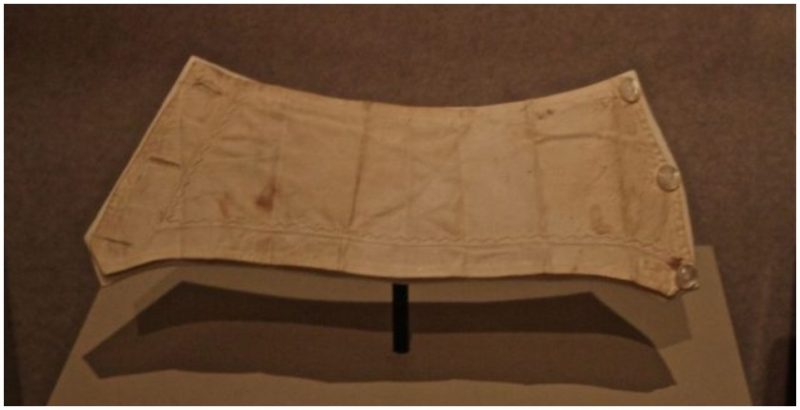Of all the historical artifacts from the Lincoln Assassination — and there are quite a few, from the bullet that struck down the President to a newspaper announcing a $100,000 reward for the capture of John Wilkes Booth — perhaps nothing is more poignant than the blood-stained pieces of fabric, cut from the dress worn by Laura Keene, the leading lady who performed for President Lincoln that fateful night.
So who was this woman — one of the last people to see Lincoln alive? Actually, Laura Keene was a stage name for the woman born Mary Frances Moss in Winchester, England. Her journey to the theater came very much by chance. Keene got hitched to a British Army officer, Henry Wellington Taylor, at age 18, and the couple had two daughters.
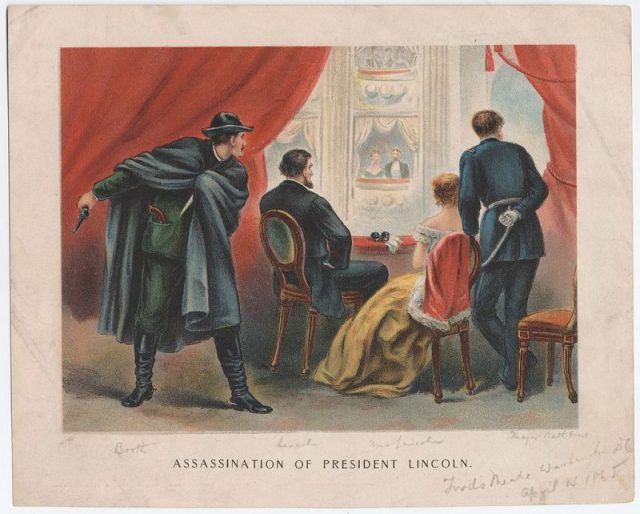
Upon being discharged from the army, Taylor opened a tavern. That’s when Keene’s life took a nightmarish turn. Taylor was arrested in 1850 (for reasons unknown) and sent to a penal colony in Australia.
That left Keene in a most precarious position — raising two children, with very little money. It was her aunt, an actress, who suggested performing. It was a risky proposition. For a woman with children and no husband to speak of, a career in the theater just wasn’t done back in the day. Thus, Mary Frances Moss became Laura Keene.
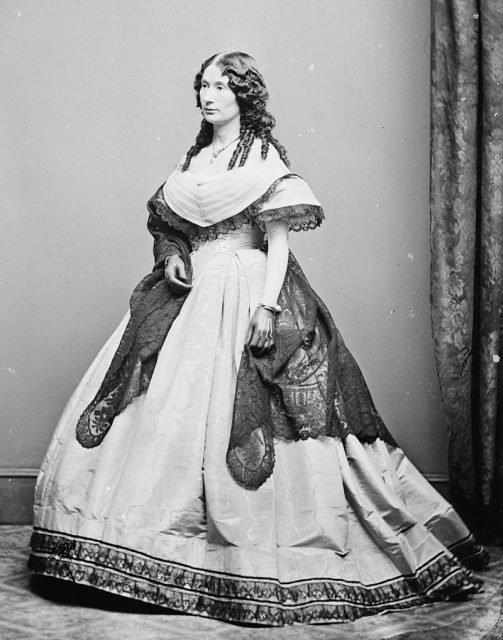
Keene’s career kicked off in 1851. A gritty mix of talent and ambition, she found herself performing on some of the biggest stages in London. Her success as a leading lady solidified, Keene traveled across the pond in 1852, hooking up with a theatre company in New York City, then moving to Baltimore.
It was there that Keene took on a dual role — not only acting but becoming a theatre manager as well. She would return to New York, and for the next several years was a major theatrical producer, as well as actress, touring in such far-flung places as California and Australia.
Related Video: Last surviving witness of Lincoln assassination talks about it in a 1950s game show
Keene’s most memorable performance would be in Our American Cousin, on April 14, 1865, at Ford’s Theatre. When the company arrived in the nation’s capital, celebrations were erupting all around the city: General Robert E. Lee and his troops had surrendered at Appomattox, effectively bringing the four-year Civil War to a close. Word had spread that President Lincoln and his wife, Mary Todd Lincoln, would be in attendance, and the theater was filled to capacity.
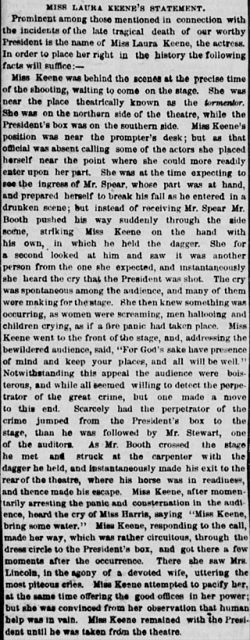
What happened that fateful night is etched in history. Actor John Wilkes Booth fatally shot Lincoln, while the President watched the play from the presidential box, then leaped to the stage and fled the scene. Keene was in the wings, about to go onstage, when the shooting occurred.
Amid the chaos, she fought her way through the stunned crowd of theater-goers and reached the presidential box. Seeing the wounded President laying on the floor, Keene knelt down, cradling his head in her lap. Blood poured onto her dress, staining its floral pattern.
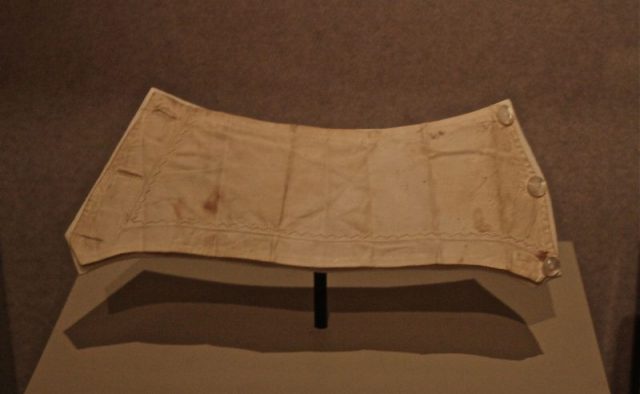
Unlike Jacqueline Kennedy, whose blood-splattered Chanel suit, from her husband’s assassination, was quickly wrapped and given to her mother to be stored in her attic (it now resides at the National Archives), Keene would hold onto her dress from that horrific night.
Indeed, it’s believed that she modeled the blood-stained costume at social gatherings, fascinating onlookers anxious to get a glimpse of the macabre garment. Eventually, Keene would entrust the dress to her family.
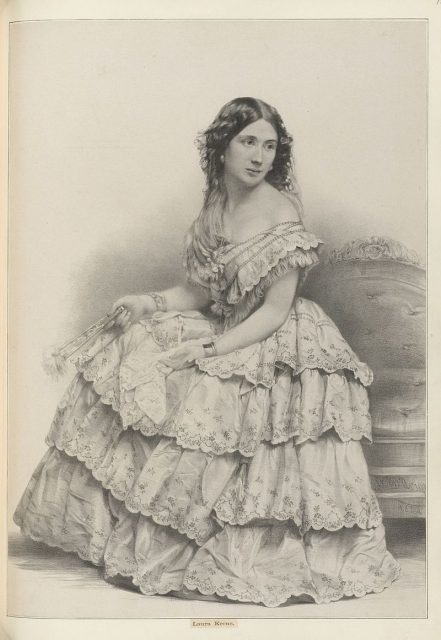
It would disappear in the decades that followed, but five pieces, with faded blood stains, were cut from the cloth — literal pieces of history. One was later donated to the National Museum of American History.
Though various witnesses, including Dr. Charles Leale, the first physician to attend to Lincoln after he was shot, have confirmed Keene’s presence in the President’s box, some have cast doubt on her story.
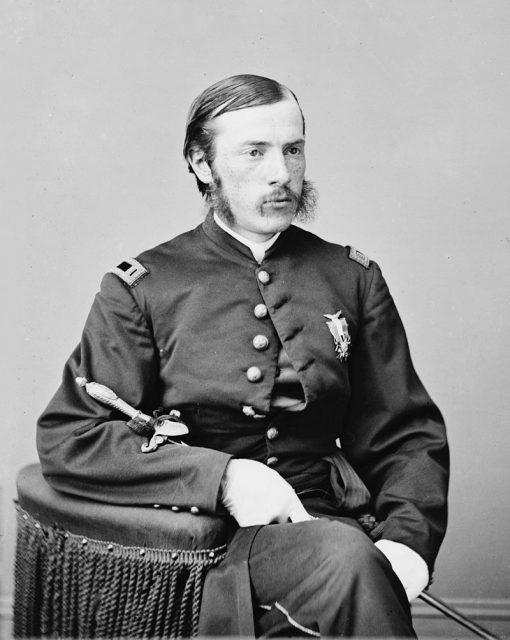
In 1966, author Billy J. Harbin would write in the Educational Theatre Journal: “One would like to believe Laura’s touching story,” but goes on to note that many people created stories, exaggerating their role in this momentous event. Couldn’t Keene, with her immense flair for the dramatic, have been one of them?
In any case, Keene did not disappear afterward. She continued as manager and star of a touring company for next several years, retiring from the theater world in 1870. Keene would die of tuberculosis at age 47, in Montclair, New Jersey.
